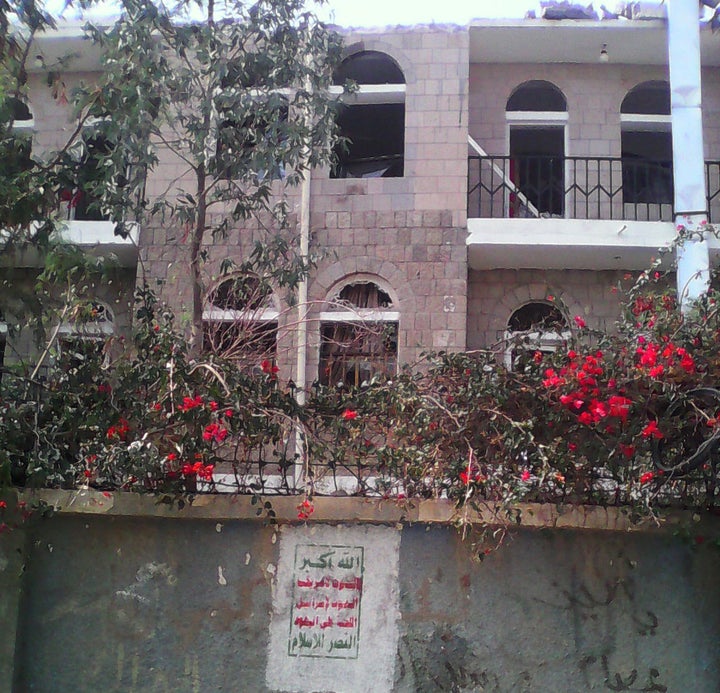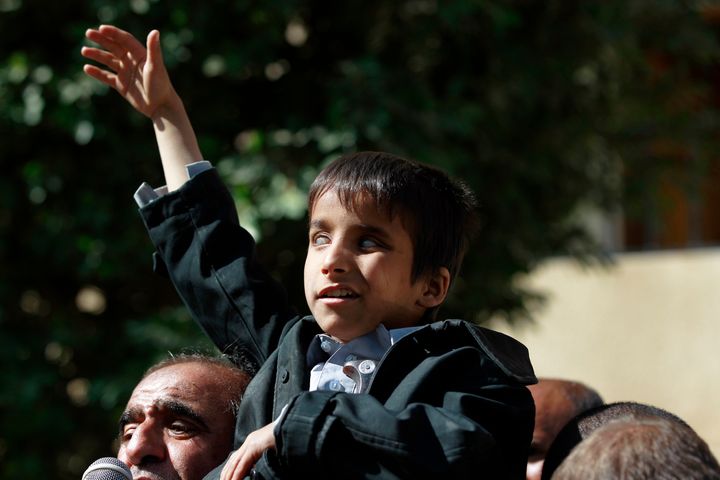
Shortly after 1 a.m. on Jan. 5, as dozens of blind children lay sleeping in their school dormitory in the capital of Yemen, the unmistakable sound of an aircraft roared past, followed by the crackle of anti-aircraft fire.
Then a bomb broke through the roof of the three-story building, blowing out doors and windows at the al-Noor Center for the Care and Rehabilitation of the Blind in Sanaa.
"I heard screaming and crying from the housing building," 27-year-old Saleh al-Matari, who works at the center, later told Human Rights Watch. "The window shattered into my room, pieces landing on my chest and cutting my foot," said another staff member, 33-year-old Sinan Hulboob.
Al-Noor's manager, Jameel al-Himyari, sped to the center from his house when he heard about the strike. He told The WorldPost that at first the children didn't understand what was going on. "When it first hit, the children thought the sound of shelling was coming from far off. ... They didn't realize it hit the center," he said.
The staff rushed to evacuate the children, and they all took shelter in a nearby mosque.
For reasons that are unclear, the bomb did not explode, so the children narrowly avoided being added to the 2,800 civilian deaths so far in Yemen's nine-month war. But the force of the bomb's landing wounded an 18-year-old student and two staff members, and rendered the center uninhabitable.
"The children are experiencing some problems with trauma and are generally very scared," al-Himyari said.
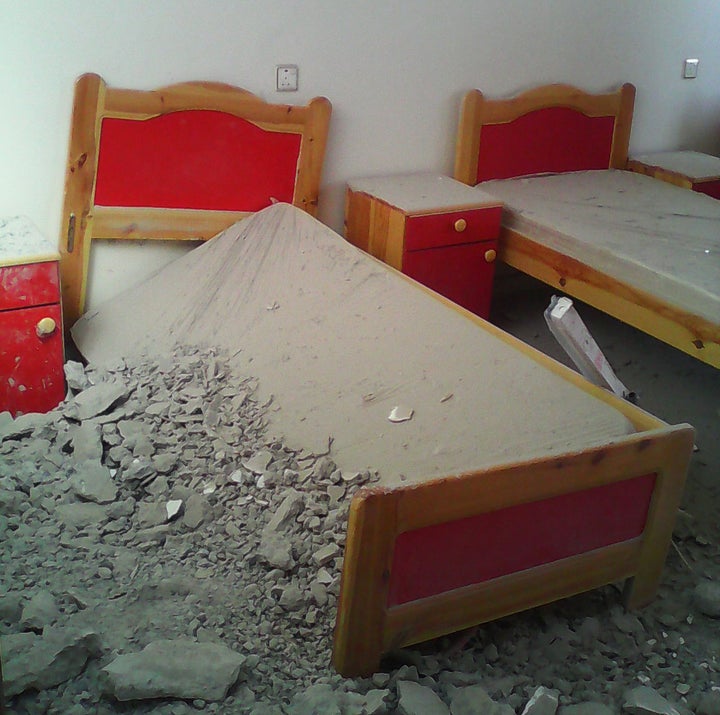
The airstrike illustrates how the most vulnerable people are trapped between warring forces in Yemen.
The Houthi rebel group, which captured much of the country in 2014 and still controls the capital, is fighting to keep power. A coalition of nations led by Saudi Arabia has bombed the rebels since last March in support of the local government and pro-government forces trying to retake territory.
The coalition has repeatedly been accused of flouting international law by using cluster bombs and bombing civilian targets, including a Doctors Without Borders hospital in northern Yemen on Jan. 10.
Human rights groups also slammed the Houthis in the wake of the al-Noor Center attack for endangering the students by locating militia members in another building in the same compound -- which also housed a kindergarten.
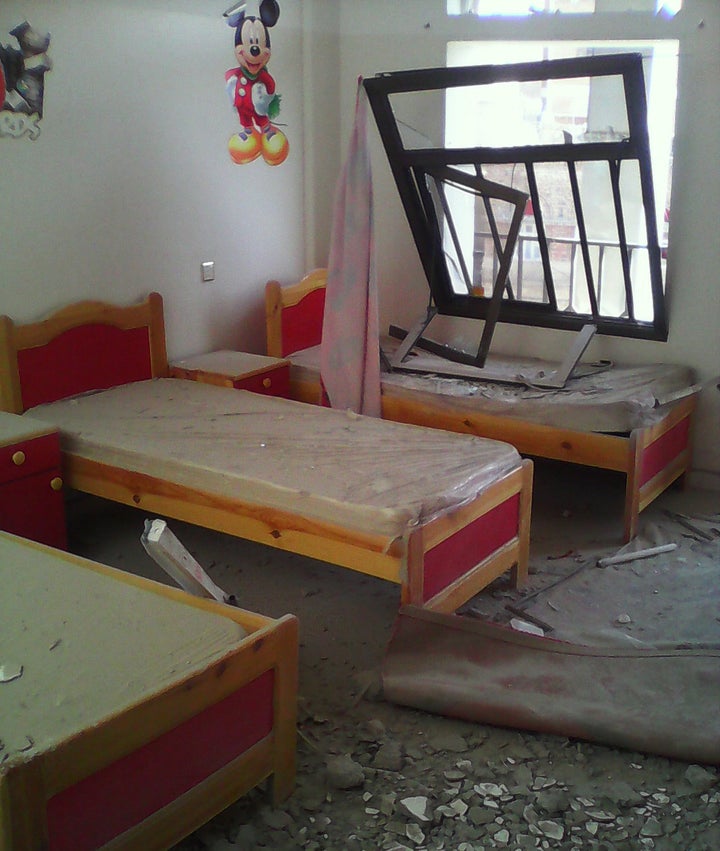
"This strike was particularly troubling because of the choice of the Houthis to set up an office not only in a civilian compound in the middle of Sanaa, but in a school compound for people with disabilities, putting them at such high risk to a coalition airstrike," Belkis Wille, Yemen researcher at Human Rights Watch, told The WorldPost. "We saw what the unfortunate but predictable outcome of taking that risk was."
Human Rights Watch emphasized that the Houthis' recklessness did not remove the obligation on other forces to try to avoid civilian casualties and to distinguish between civilian and military targets.
"After nine months of fighting, there has been no letup in coalition air attacks striking homes, hospitals, markets, and now a school for people with visual disabilities, making clear that none of Yemen's civilians are safe," Shantha Rau Barriga, disability rights director at Human Rights Watch, said in a statement after the bomb struck the al-Noor Center.
The dangers facing those civilians were highlighted again on Tuesday, when children walking home from school in the city of Taiz were hit by an airstrike as they passed a military tank, according to Doctors Without Borders staff who were in the area at the time. Ten children and a teacher were killed in the blast, witnesses and parents told the medics, who treated two girls who were injured.
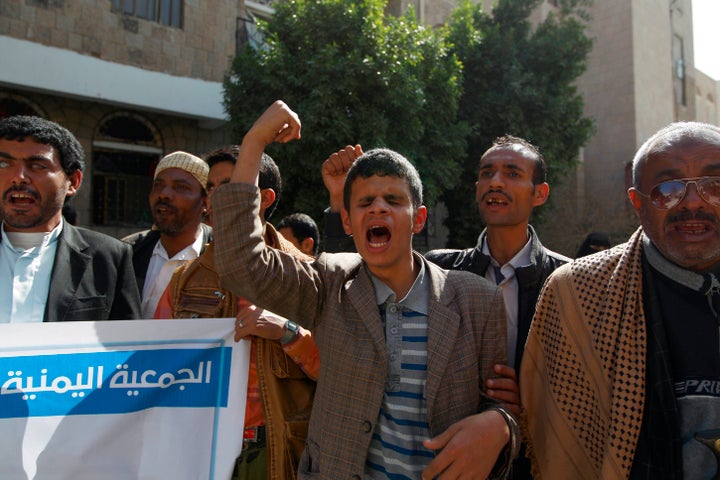
Even before the war, the estimated 3 million people who have disabilities in Yemen faced huge challenges.
"Yemen is the poorest country in the region, with limited means for programs to support people with disabilities, and no single government body was willing to take responsibility for such programs," Wille, the Human Rights Watch researcher, said.
Now, they are particularly vulnerable to the war raging around them.
Some people who depend on wheelchairs have been unable to flee to safe areas, the United Nations says. It's harder to access medical treatment as Yemen's fragile health care system struggles to cope with thousands of wounded amidst shortages of medicine and supplies and war damage to around 100 health facilities. Hundreds of organizations helping people with disabilities had to close because of the fighting last year, the U.N. said.
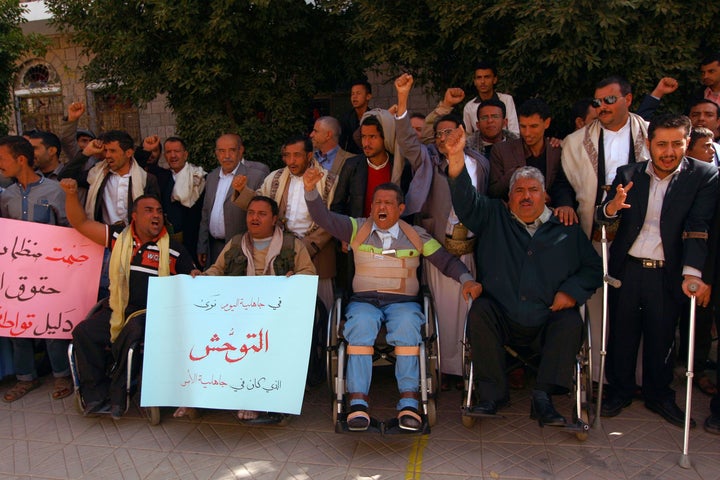
Since the airstrike, the al-Noor Center has joined this list of closed organizations, at least temporarily, after decades as a lifeline to people with visual disabilities.
While the Houthis moved into the complex last May, the al-Noor Center had been providing education and support to people with visual disabilities since 1967. It currently has around 250 students, from ages 6 to 30, who come from all over Yemen, manager al-Himyari told The WorldPost.
"There are not many centers like this in Yemen, and this is the only one in Sanaa," he said. "We don't have much funding, but we teach most subjects, including Braille."
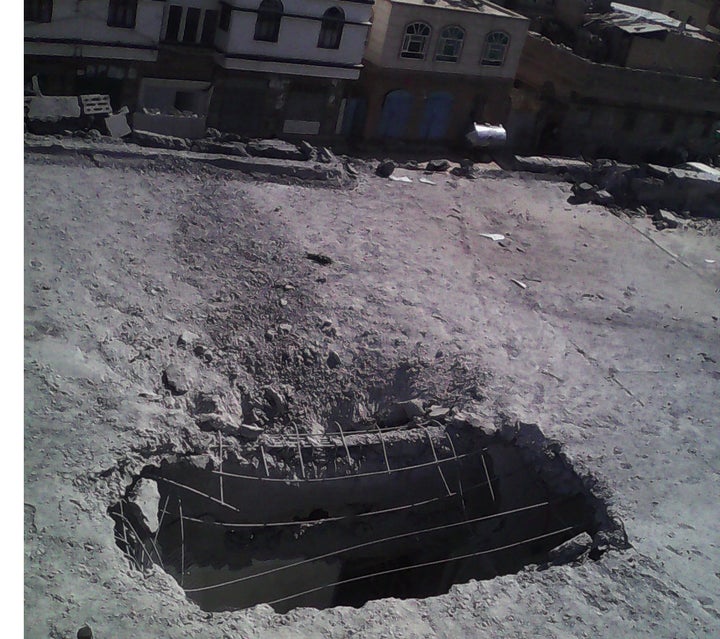
For now, the al-Noor students are waiting to see when they can go back to their school.
Many of the students and staff are staying in a nearby hotel, and they hope to hold classes there while the building is repaired, al-Himyari said. There is a lot of damage, but he is optimistic it will be repaired in the next few months.
"The children are going through a state of trauma because of the bombing," al-Himyari said. "We hope that once the center is rebuilt and they are able to return, they will be able to recover."
